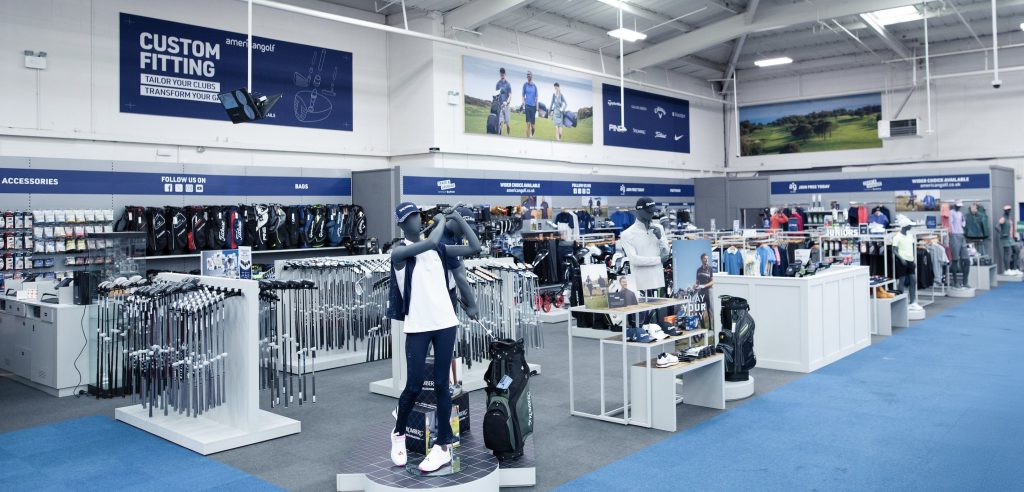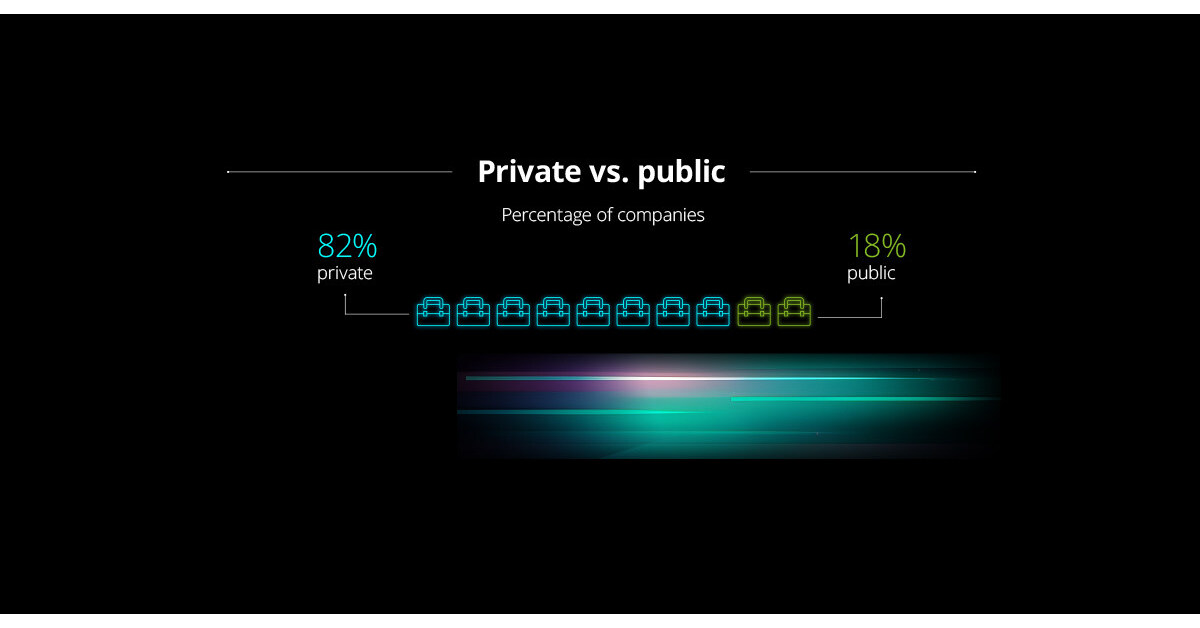Amazon Prime Day has completely changed how and when people shop — even at other retailers

You’ve likely heard of Amazon Prime Day even if you’ve never bought something during the event. The Prime member-exclusive sale is famously one of the biggest shopping moments of the year, and despite it only being around for a decade, it’s fully embedded in consumer culture, says Dr. Ross Steinman, a professor of consumer psychology at Widener University. Members wait all year for the event, which has cemented its place in the retail calendar among giants like Black Friday and Cyber Monday, and established it as what Steinman calls “the pantheon of consumer holidays.”
Even while facing challenges like changes in shopping habits due to inflation, Amazon continues to scale Prime Day to record-breaking heights. Globally, the event brings in billions of dollars in sales each year and drives up e-commerce activity across retailers. Amazon also hosts a second version of Prime Day in October to kick off the holiday shopping season.
To contextualize Prime Day and its impact on e-commerce, I charted the event’s history over the past decade. I also consulted experts about how it’s grown since its inception and what to expect during Prime Big Deal Days next week on Oct. 8 and 9.
SKIP AHEAD How Prime Day started | Why Amazon hosts Prime Day | Challenges Prime Day faces | Prime Day 2024 results | Prime Big Deal Days 2023 results | What to expect during Prime Big Deal Days 2024 | The best products to shop during Prime Day | Why trust NBC Select?
How did Prime Day start?
The first-ever Prime Day took place on July 15, 2015, to celebrate the company’s 20th anniversary, according to Amazon. It lasted 24 hours and was available to members in nine countries: the United States, United Kingdom, Spain, Japan, Italy, Germany, France, Canada and Austria. Since 2015, Prime Day has expanded its reach — Amazon now hosts the sale in over 20 countries and extended it to be 48 hours long.
One of the factors that makes Prime Day so unique is that it’s a manufactured event Amazon created, unlike Black Friday and Cyber Monday, both of which are tied to the holiday shopping season. Prime Day (the first one, anyway) is traditionally held in mid-July, which is a strategic decision on the company’s part: The summer is a slower period for retailers, and Prime Day is an attempt to remedy that. “Prime Day provides Amazon with a jolt during an otherwise dormant shopping season,” says Steinman. Hosting Prime Day during the week is a strategic decision, too. Summer weekends are reserved for relaxing, sleeping in, leisure activities and traveling, but Amazon knows it can capture shoppers’ attention during the week.
By hosting Prime Day in July, Amazon altered the retail calendar and forced competitors like Walmart, Target, Macy’s and Best Buy to respond. Since the first Prime Day in 2015, many retailers have changed the timing of their sales or created new ones — like Walmart Plus Week and Target Circle Week — to align with the dates of Prime Day. Amazon’s competitors hope Prime Day shoppers will spill over onto their sites and make additional purchases.
Why does Amazon host Prime Day?
Amazon’s main goals for Prime Day are to attract new Prime subscribers and drive sales to its marketplace. Once Amazon gets shoppers in the door by offering them exclusive deals, the retailer can teach members about what experts call the retailer’s “ecosystem of consumption,” meaning its network of platforms like Prime Music, Amazon Fresh grocery delivery, Prime Video, Audible and Kindle Unlimited. Prime Day, then, is positioned as an entry point to a Prime membership. The sale allows the retailer to accrue an army of repeat shoppers who want to take advantage of everything the loyalty program offers them year-round, not just during one mega sale.
“The more Prime subscribers Amazon has, the more likely they are to make more of their purchases from Amazon,” says Steinman. “Amazon’s goal is to be sticky. Once you’re in its ecosystem, it’s difficult to leave.”
As for driving sales to Amazon’s marketplace, big and small brands offer some of the year’s lowest prices on tech, apparel, toys, beauty products, small kitchen appliances and more. But the brands Amazon owns, like Fire TVs and tablets, Kindle, Ring and AmazonBasics, tend to discount their products the most. Selling Amazon-owned devices is particularly lucrative for the retailer because they’re designed to increase your purchases on Amazon, says Steinman. Much of this tech is equipped with Amazon Alexa, a virtual assistant who can notify you about deals and even make purchases if you give her permission.
There’s one more reason Prime Day is such an important event for the company: “It provides Amazon with an opportunity to do a test run and see if they need to work out any kinks as they get closer to the formal holiday shopping season,” says Steinman. Prime Day creates an artificial surge in orders, similar to what the retailer experiences between November and December.
What challenges is Amazon Prime Day currently facing?
One of Amazon’s biggest challenges is attracting new Prime subscribers each year. It’s hitting a saturation point, at least in the United States, says Steinman. In 2022, only 5% of Prime Day shoppers joined the retailer’s loyalty program on or shortly before the sale, while 78% were already Prime members, according to Digital Commerce 360. “This saturation point has led to an interesting crossroads for Amazon,” says Steinman. “The retailer now has to figure out, where do we go from here?”
Hosting a second Prime Day later in the year may be one way Amazon is trying to attract new Prime members and retain the ones they already have. It plays on shopper’s fear of missing out on a great deal by creating the idea that member-exclusive mega sales can take place at any point, says Steinman. However, a second Prime Day also takes away some of the novelty July’s mega sale became known for. “If consumers know another Prime Day is coming in October, they may say to themselves, “I’m going to spend my money on my vacation in July, and wait to shop Prime Day in October,” says Steinman.
Prime Day results from July 2024
Prime Day in July 2024 marked the mega sale’s tenth anniversary, so shoppers knew what to expect: 48 hours of exclusive deals and some of the lowest prices all year on Amazon-branded devices, small kitchen appliances, household essentials, luxury beauty products and more. Because of this, Steinman says Prime Day felt familiar to consumers. “A decade in, Prime Day is like a movie you’ve watched a million times. You know the arc, and the plot, and the ending, but you still sit down to watch it to the end. There are no surprises, which offers comfort for Prime subscribers,” he says.
Amazon has not disclosed sales from Prime Day 2024. But in a press release, the retailer shared that it was the biggest Prime Day yet with more items sold during the two-day event than any one previously. Adobe Analytics estimates that sales across all U.S. e-commerce retailers hit $14.2 billion between July 16 and 17. This shows that Prime Day has the power to create a halo effect on e-commerce by driving purchases to its site as well as others.
In July 2024, bestselling Prime Day products included the Amazon Fire TV Stick, Premier protein shakes, Liquid I.V. packets, Glad trash bags and Cosrx snail mucin serum, according to Numerator. Something these items have in common is that they’re typically personal purchases, which means people are shopping for themselves, says James Risley, a research data manager and senior analyst at Digital Commerce 360. Unlike Black Friday and Cyber Monday, which is around the time holiday shopping begins, Prime Day is in the middle of summer, so members use it as a chance to buy items they want, not as gifts, says Risley.
Prime Big Deal Days results from October 2023
For the first time in 2022, Amazon hosted two Prime Day-level events in one year: Prime Day, the retailer’s highly-anticipated annual summer sale, took place in July, and the Prime Early Access Sale happened three months later in October. Amazon has since followed that schedule, but changed the name of the October event to Prime Big Deal Days, which is coming up on Oct. 8 and 9, 2024.
An October Prime Day is Amazon’s attempt to kick off the holiday shopping season, experts told me. Early Black Friday promotions from other retailers have recently crept into October, giving shoppers extra time to buy gifts. Amazon noticed this trend and responded with a sale of its own.
Amazon did not disclose sales from its October 2023 savings event, but in a press release, the retailer shared that Prime Big Deal Days outpaced 2022’s Prime Early Access Sale. However, discounts during Prime Big Deal Days were generally lackluster compared to Prime Day, says Risley. Shoppers are more price conscious than ever before, so they’re paying extra attention to the quality of sales and expect deep discounts, not 15% or 20% off, he says.
People also didn’t feel the same level of pressure to shop Prime Big Deal Days as they did during Prime Day. The summer isn’t filled with opportunities to take advantage of sales, which works in Prime Day’s favor. But shoppers know that Black Friday and Cyber Monday deals start as early as October across dozens of brands and retailers, so they didn’t approach Prime Big Deal Days with urgency, says Risley.
What to expect during Prime Big Deal Days 2024
Prime Big Deal Days is coming up on Oct. 8 and 9, and it’s Amazon’s third year hosting the fall mega sale. It’s fundamentally the same savings event compared to July’s — it’s 48 hours long, exclusive to Prime members and offers very similar deals across product categories. However, there’s more emphasis on holiday shopping during October’s Prime Day, so expect to see a larger selection of giftable products on sale, like toys, gift cards and luxury beauty.
Like in years past, Walmart, Target and other retailers are hosting their own October savings events around the time of Prime Big Deal Days. For example, Walmart’s Holiday Deals event is from Oct. 8 to 13, Target Circle Week is Oct. 6 to 12 and Best Buys 48-Hour Flash Sale is Oct. 8 to 9. In response, some shoppers are diversifying their purchases across retailers, but for the most part, Prime subscribers are loyal to Amazon. They get free, fast shipping, their payment information and address is stored in their account, and the retailer has a generous return policy — Amazon makes the shopping experience convenient from start to finish, which keeps customers coming back, says Steinman.
What are the best products to buy during Prime Day?
Steinman says there’s an inaccurate stereotype about shoppers during large sale events like Prime Day. “The perception is that somebody’s going to get swept up in excitement and engage in a number of impulse purchases,” he says. “But by and large, that’s not what happens on Prime Day.”
For the most part, Prime members are savvy shoppers, and many compare prices across retailers to determine whether a deal is worth taking advantage of. Some use Prime Day to stock up on household basics and pantry staples, but that’s not to say shoppers ignore deals on luxury or big-ticket items. Generally, however, Prime Day shoppers are conscious about using Amazon’s sale to their advantage and spending strategically, says Steinman.
Shoppers don’t know exactly what Amazon is discounting on Prime Day until the sale starts, which is part of the event’s allure. Bestselling Prime Day products vary from year to year and from country to country, which isn’t just the result of different buying habits — Amazon’s Prime Day offerings in one country aren’t always reflective of another. But factors like a deal being well-advertised or well-priced can contribute to it becoming a bestseller, as can Amazon’s agenda of selling as many of its devices as possible. Brands also use Prime Day to discount soon-to-be out-of-season or out-of-style merchandise.
Some of the best Prime Day discounts are Amazon’s Lightning Deals, flash sales that give shoppers a short window to purchase limited quantities of specific products. Lightning Deals put shoppers in a competitive mindset and add what Steinman calls a “gamification” aspect to Prime Day. Shoppers don’t have time to think about whether they need the item being sold as a Lightning Deal, so they impulsively buy it because they don’t want to miss out.
Amazon also introduced an invite-only deals program in 2023. Prime members can request an invitation to select deals that are expected to sell out and Amazon notifies them via email if they’re selected to shop. The invite-only deals program adds another level of exclusivity to Prime Day. It also gives Amazon a picture of what types of products people are interested in and what discount levels they tend to gravitate toward before the sale even begins, experts say.
Meet our experts
At NBC Select, we work with experts with specialized knowledge and authority based on relevant training and/or experience. We also ensure that all expert advice and recommendations are made independently and with no undisclosed financial conflicts of interest.
- Dr. Ross Steinman is a professor of consumer psychology at Widener University.
- James Risley is a research data manager and senior analyst at Digital Commerce 360.
Why trust NBC Select?
I’m an associate updates editor at NBC Select and have been reporting about Amazon Prime Day for five years. I wrote NBC Select’s Prime membership guide and Amazon Prime Day history, as well as cover deals during Amazon sale events. For this piece, I interviewed two experts about Amazon Prime Day and its impact on the retail industry.
Catch up on NBC Select’s in-depth coverage of personal finance, tech and tools, wellness and more, and follow us on Facebook, Instagram, Twitter and TikTok to stay up to date.
Related
American Retailers Leave Consumers Exposed to Email Fraud Amid Holiday…
Proofpoint research reveals 40% of the leading retailers are not actively blocking bogus emails that spoof their brand SUNNYVALE, Calif., November 21, 2
American actor John Malkovich spotted shopping at Timișoara’s first official…
Well-known American actor John Malkovich, who was on stage last week at the National Theatre in Timișoara, visited the city’s first official souvenir shop on
I’m a Brit who went grocery shopping in America for…
By ZAC CAMPBELL Published: 07:57 GMT, 16 November 2024 | Updated: 08:36 GMT, 16 November 2024
American lifestyle brand opens 1st Sonoma County store, fueling local…
The clothing brand that recently opened in Healdsburg sparked conversation around keeping shopping local in downtown.











